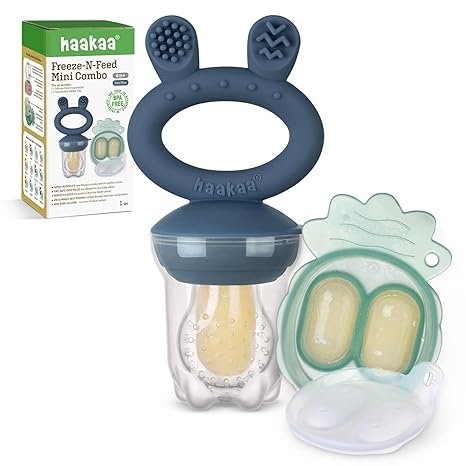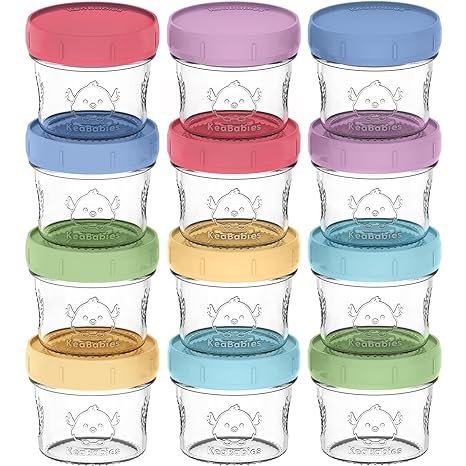Introduction to ice cream for babies
In recent years, baby ice creams have emerged as a rising trend among parents looking for healthy and delicious dessert options for their little ones. This novel idea not only offers a refreshing alternative during the warmer months, but also allows parents to introduce high-quality ingredients into their children’s diet, encouraging healthy eating habits from an early age.
The concept of VIP ice creams for babies focuses on the use of natural and organic ingredients, avoiding additives and preservatives that are usually found in commercial ice creams.
Preparing these ice creams at home allows parents to completely control the ingredients used, ensuring that they do not contain added sugars or other potentially harmful elements. Likewise, this practice can be an excellent opportunity for babies to explore new flavors and textures, which is essential for the development of their palate and the acceptance of a varied diet. This trend not only contributes to the baby’s physical well-being, but also promotes a positive relationship with food from the first years of life.
Benefits of homemade ice cream for babies
Homemade ice cream allows for complete recipe customization. This is particularly useful for addressing each baby’s specific dietary needs, such as food allergies or intolerances. Parents can choose certain ingredients that are organic, gluten-free, dairy-free, or any other relevant dietary considerations, ensuring the ice cream is safe and suitable for their child’s consumption.
The ability to adapt flavors is another advantageous aspect. Babies may have particular flavor preferences, and homemade ice cream allows them to experiment with different fruits, vegetables, and other natural ingredients to find combinations they like. This not only makes ice cream more attractive to babies, as we mentioned above, but it can also be a way to introduce new foods and flavors into their diet in a fun, refreshing and acceptable way.
From a nutritional perspective, ice cream can be an excellent source of hydration and essential nutrients. Using ingredients rich in vitamins and minerals, such as fresh fruits and yogurt, you can create nutritious ice creams that contribute to the healthy development and growth of the baby. Fruit-based ice creams are also a great way to increase your water intake, crucial for maintaining hydration, especially in the warmer months.
As we see, they provide a series of important benefits for the health and well-being of the little ones, guaranteeing a safe, nutritious diet, adapted to their individual needs. I recommend these breast milk ice cream molds that are special for babies:
Haakaa Baby Fruit Food Feeder & Mini Freezer Nibble Tray Combo, Breastmilk Popsicle Molds for Baby Cooling Relief, BPA Free Silicone Feeder for Safe Infant Self Feeding, 4 Month+ (Steel Blue)
INTRODUCE SOLIDS SAFELY: Haakaa’s award-winning Silicone Feeder features a pouch with fine holes that allow only tiny food pieces to pass through, reducing choking risks.
EASE TEETHING DISCOMFORT: Freeze breastmilk or other foods and insert into the pouch to provide soothing relief for your little one. Featuring a silicone bunny-like top with textures that gently massage sore gums.
PROMOTES INDEPENDENT FEEDING: Designed with an easy-to-hold ring suitable for tiny hands, our Feeder fosters self-feeding skills and enhances hand-eye coordination.
SAFE RAISED RIM DESIGN: ensures the feeder stays closed, keeping it secure while baby happily munches away.
PERFECTLY PORTIONED SERVINGS ARE A BREEZE: One serving from our specially designed tray molds fits the Feeder Pouch, simpifying your meal prep routine.
LESS PARTS TO ASSEMBLE & CLEAN: Suitable for most cleaning methods including boiling water – NO fiddly pieces, grubby mesh or clips to grow nasties.

Safe and nutritious ingredients for baby ice cream
Selecting safe and nutritious ingredients is crucial at this young age. Ice cream for babies should be made of components that promote their well-being and development.
-An excellent option is to use fresh fruits such as banana, apple, pear and mango, which not only provide natural sweetness but also essential vitamins. Strawberries and blueberries are also viable options, but it is important to make sure they are well crushed to avoid choking risks.
-Natural yogurt is another ideal ingredient. Opting for yogurts without added sugar and preferably probiotics can benefit the digestive health of children. Breast milk or infant formulas can also be used as a base, especially for babies under one year old.
-For those with allergies or intolerances, plant milks such as almond, coconut or oat milk are excellent alternatives, as long as versions without added sugar and fortified with calcium and vitamin D are chosen.
-In addition to fruits and yogurts, you can also incorporate soft vegetable purees such as carrot or pumpkin, which add additional nutritional value without compromising flavor. To sweeten naturally, you can add a small amount of date puree or honey, although the latter is only suitable for babies over one year old.
-It is highly recommended to opt for organic products whenever possible. Organic foods are free of pesticides and other harmful chemicals, making them safer for little ones. It is also advisable to consult with your baby’s pediatrician before introducing new foods, especially if there is a family history of allergies.
-Avoid common allergens such as nuts, eggs and gluten can cause adverse reactions. If you decide to include potentially allergenic ingredients, do so gradually and watch for any signs of allergies such as rashes, swelling, or breathing problems. In any case, I would not introduce any potentially allergenic products until the pediatrician tells me that it is an appropriate time. Better safe than sorry.
Tips for Safely Serving Ice Cream to Babies
This requires certain precautions to ensure your safety and well-being. Below are some practical tips that can help parents enjoy this experience appropriately.
-First, it is important to gradually introduce new foods into the baby’s diet. Ice cream, although delicious, must be presented carefully. Start with small amounts and watch for any adverse reactions. Look for signs of an allergy or intolerance, such as rashes, vomiting, or diarrhea.
-Supervision during ice cream consumption is crucial. Babies are at a stage of development where swallowing and chewing are still being perfected. Be sure to be present while baby enjoys the ice cream to prevent any risk of choking. Also, avoid ice creams that contain large pieces of fruits or nuts, as they can be dangerous.
-Adapting the portions and consistency of ice cream according to the age and development of the baby is essential. Younger babies can benefit from ice creams with a softer, more homogeneous texture.
-As they grow, thicker consistencies and mixtures with additional ingredients can be introduced. Keep portions small to avoid excess cold and sugar.
-Cleaning and proper storage of ice cream are aspects that should not be underestimated. Use airtight containers to avoid cross-contamination and store ice cream in the freezer at a constant temperature. Be sure to wash utensils and containers thoroughly before and after use to maintain optimal hygiene. Do not mix adult ice cream containers with your baby’s, for hygiene and safety. Here are some that will surely be useful to you:
KeaBabies 12pk 4oz Glass Baby Food Containers – Leak-Proof, Microwavable Small Baby Glass Jars with Lids, Baby Food Storage Containers, Baby Snack Containers, BPA-Free Baby Food Jars (Nord)
12-Pack, Durable 4oz Food-grade Baby Food Containers – KeaBabies Prep Baby Bullet Containers check all the right boxes for a reliable baby food storage. They are great for busy parents to prepare and store homemade food safely and smoothly.
Food-grade and Safety-certified – Our Prep Baby Food Storage Containers are toxin-free. These baby puree containers are safe for use in the freezer, microwave, and dishwasher. They are certified to be lead, BPA, phthalates, and PVC free.
Airtight and Leak-proof – Each of our Prep Baby Food Jars feature a removable silicone o-ring around the lid to provide an airtight seal, keeping food fresh. No more worries about food leaks and spills with our baby food jars with lids.
All-in-One Convenience – Our Prep Glass Baby Food Jars make food preparation, storage, and serving fun and efficient. The jars are versatile for liquids, purees, cut fruits, and snacks. Store, reheat, serve, and feed your baby from one single jar.
Perfect Portion, Smart Design – Our Prep Baby Food Maker has measurement markings and writeable lids for precise portioning and labelling. Its Smart Stacking Lid features a fall guard that helps secure each jar from slipping when stacked.

By following these tips, parents can safely offer delicious and exclusive VIP ice creams to their babies, allowing them to enjoy these delicious desserts without compromising their health and well-being.
Here is the link to the VIP Ice Cream recipe page for the little ones.
